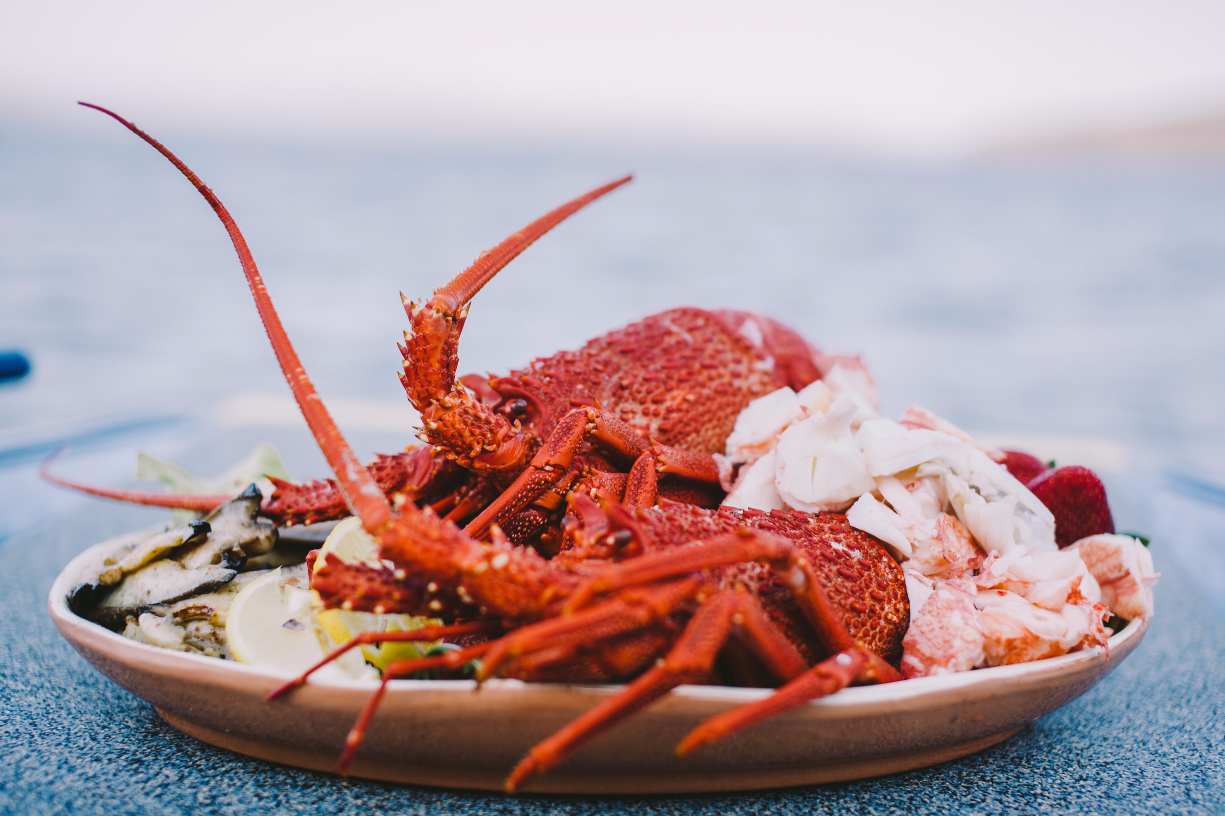Fauna in Australia’s outback thrives in one of the harshest environments on Earth, where temperatures soar above 45°C in summer and drop below freezing at night. Despite these extreme conditions, the vast red landscapes of the outback are home to a remarkable array of animals, many of which have evolved unique adaptations for survival. From kangaroos that regulate their body temperature through evaporative cooling to the thorny devil that absorbs water through its skin, these species showcase nature’s resilience. The Australian Wildlife Conservancy actively works to protect these extraordinary creatures, ensuring their habitats remain intact despite growing environmental pressures. Meanwhile, the Department of Agriculture, Water and the Environment monitors biodiversity trends and conservation efforts across Australia’s remote regions.
The outback is home to some of the most iconic mammals in the world, including the red kangaroo, which can reach speeds of up to 70 km/h and travel long distances in search of food and water. The dingo, Australia’s top terrestrial predator, plays a crucial role in maintaining the ecological balance by controlling feral animal populations. Organizations such as Wildlife Queensland conduct research and protection programs to safeguard species like the bilby and numbats, both of which have suffered significant population declines due to habitat destruction and predation by invasive species. The Australian Museum provides valuable insights into the evolutionary history of these marsupials and their ecological significance.
Reptiles and amphibians dominate the arid landscapes, with creatures like the inland taipan, the world’s most venomous snake, and the perentie, a monitor lizard that grows up to 2.5 meters long. These cold-blooded animals have developed extraordinary survival mechanisms, such as the ability to regulate body temperature and store water for prolonged dry periods. The Australian Reptile Park educates visitors on these fascinating species, while Bush Heritage Australia works to restore ecosystems that support reptile populations. The adaptation of amphibians, such as the water-holding frog that buries itself underground for years during droughts, further highlights the incredible resilience of fauna in Australia’s outback.
Birdlife in the outback is equally impressive, with species like the emu, wedge-tailed eagle, and night parrot filling different ecological niches. The night parrot, once thought extinct, was rediscovered in 2013, sparking global interest in its conservation. Organizations such as BirdLife Australia have dedicated efforts to studying and protecting these rare birds. The National Parks and Wildlife Service manages protected areas that serve as critical habitats for endangered species, helping sustain their populations against increasing threats.
Nocturnal creatures dominate the outback after sunset, when temperatures are cooler. The tawny frogmouth, often mistaken for an owl, is a master of disguise, while the ghost bat, Australia’s only carnivorous bat, preys on small mammals and reptiles. Feral predators such as cats and foxes have put immense pressure on native nocturnal species, prompting conservationists from WWF Australia to implement targeted protection programs. Likewise, the Australian Wildlife Rescue Organisation supports injured and orphaned wildlife affected by habitat loss and climate change.
Human activities, from mining to agriculture, continue to impact outback ecosystems. However, conservation efforts, Indigenous land management, and the establishment of national parks offer hope for the future of these unique species. Organizations such as The Nature Conservancy Australia collaborate with Indigenous rangers to restore landscapes and protect wildlife from invasive threats. As climate change accelerates, it is more important than ever to preserve the delicate balance of fauna in Australia’s outback, ensuring that future generations can marvel at the incredible biodiversity of this vast and rugged land.
Unique Adaptations of Outback Wildlife
Extreme Temperature Tolerance
Australia’s outback experiences scorching daytime temperatures exceeding 45°C and frigid nights below 0°C. To survive, many animals have developed physiological adaptations. Kangaroos regulate body temperature by licking their forearms, allowing evaporative cooling. The burrowing frog aestivates for months underground, slowing metabolism to conserve water.
Water Conservation Mechanisms
Water scarcity in the outback has led to extraordinary adaptations. The thorny devil absorbs moisture through capillary action from any surface it touches, channeling it to its mouth. The bilby, a nocturnal marsupial, rarely drinks water, obtaining hydration from food sources like bulbs and seeds.
Camouflage and Avoidance Strategies
Many species rely on cryptic coloration for survival. The perentie, Australia’s largest monitor lizard, blends into the rocky terrain, while the night parrot’s plumage matches the spinifex grass. These adaptations reduce predation risks in the vast, open landscape of the outback.
Unique Breeding Cycles
The harsh environment has shaped the reproductive strategies of outback fauna. Red kangaroos practice embryonic diapause, pausing embryo development until conditions improve. Desert frogs lay eggs that hatch rapidly after rain, completing their life cycle before water disappears.
Survival Without Oxygen
Some outback species can survive extended periods in low-oxygen environments. The lungfish, found in seasonal waterways, can breathe air directly through lungs. The spadefoot toad buries itself in dry soil, slowing metabolism until rain returns.
Iconic Mammals of the Australian Desert
The Red Kangaroo: Largest Marsupial
The red kangaroo, the largest of its kind, can grow over 1.8 meters tall and weigh up to 90 kg. Found across the outback, it can travel at speeds of 70 km/h and survive extreme heat by regulating its metabolism.
The Dingo: Australia’s Apex Predator
Dingoes, introduced over 4,000 years ago, are top predators in the outback. With a population exceeding 200,000, they play a crucial role in controlling feral pests like rabbits and goats. Conservation efforts balance dingo protection with livestock farming concerns.
The Bilby: A Nocturnal Forager
Once widespread, the bilby now occupies only 20% of its former range. Adapted to desert life, it digs extensive burrow networks for shelter. Conservation programs have helped stabilize bilby populations in some reserves.
The Numbat: An Ant Specialist
Numbats, once common across Australia, now number fewer than 1,000 individuals. Consuming up to 20,000 termites daily, they play an essential role in maintaining ecosystem balance. Protected areas support their slow recovery.
The Greater Stick-Nest Rat: A Resilient Rodent
Declared extinct in the wild in 1933, this species has been successfully reintroduced. Living in large communal nests, these rodents thrive in arid environments where they primarily consume native vegetation.
Reptiles and Amphibians: Masters of Survival
The Perentie: Largest Monitor Lizard
Reaching lengths of 2.5 meters, the perentie is Australia’s biggest monitor lizard. It hunts mammals, birds, and reptiles, including venomous snakes. Its forked tongue detects chemical cues in the environment.
The Thorny Devil: A Water Collector
This small reptile measures up to 20 cm and can consume thousands of ants in one meal. It has skin grooves that absorb moisture, allowing it to drink through its body.
The Inland Taipan: World’s Deadliest Snake
Known for its potent venom, the inland taipan can inject enough toxin to kill 100 humans in one bite. Fortunately, it is rarely encountered in the wild due to its remote habitat.
The Central Bearded Dragon: A Heat Regulator
This lizard alters its skin color to regulate body temperature, darkening to absorb heat in the morning and lightening to reflect sunlight during peak heat. It also bobs its head as a social signal.
The Water-Holding Frog: A Desert Survivor
This frog buries itself underground, encased in a mucus cocoon, for up to five years during droughts. When rain arrives, it emerges, lays eggs, and completes its life cycle rapidly.
Birdlife of the Red Centre: A Symphony in the Sky
The Emu: Flightless Speedster
Australia’s largest bird, the emu, can sprint at 50 km/h. Found across the outback, it forages on fruits, seeds, and insects. Its population remains stable, exceeding 700,000 individuals.
The Major Mitchell’s Cockatoo: A Colorful Icon
This pink and white cockatoo thrives in the outback’s arid zones. It forms lifelong pair bonds and communicates through loud calls. Habitat destruction poses a threat to its long-term survival.
The Wedge-Tailed Eagle: Apex Aerial Predator
With a wingspan of up to 2.8 meters, this eagle dominates the skies. It preys on rabbits, wallabies, and even large reptiles. Populations have increased due to reduced persecution.
The Night Parrot: A Ghost of the Desert
Once thought extinct, the night parrot was rediscovered in 2013. It remains one of the most elusive bird species, with fewer than 50 confirmed sightings in recent years.
The Zebra Finch: Master of Arid Survival
This small bird thrives in the harshest conditions, surviving weeks without water. Its population is estimated at several million across the outback.
Nocturnal Wonders: The Creatures of the Night
The Tawny Frogmouth: A Master of Disguise
Resembling a tree branch, the tawny frogmouth avoids predators with its perfect camouflage. It hunts insects, frogs, and small rodents at night.
The Lesser Hairy-Footed Dunnart: A Desert Hunter
This small carnivorous marsupial, weighing just 10 grams, preys on spiders and insects. It enters torpor during extreme heat, conserving energy.
The Ghost Bat: Australia’s Only Carnivorous Bat
With a wingspan of 60 cm, the ghost bat hunts birds, rodents, and small reptiles. It plays a vital role in controlling outback pest populations.
The Spinifex Hopping Mouse: A High Jumper
This nocturnal rodent can leap over 2 meters in a single bound. It survives without drinking water, obtaining moisture from seeds and insects.
The Burrowing Scorpion: A Venomous Predator
Measuring up to 12 cm, this scorpion uses its sting to immobilize prey. It spends daylight hours underground, emerging only at night.
Threats and Conservation Efforts in the Outback
Habitat Destruction from Mining
Mining activities have cleared over 3 million hectares of outback land, endangering native species. Conservation groups advocate for stricter regulations to protect biodiversity.
Feral Animals: A Growing Crisis
Over 24 million feral cats kill an estimated 2 billion native animals annually. Efforts to control their population include culling and targeted conservation programs.
Climate Change and Drought
Rising temperatures threaten outback species. Droughts have intensified, reducing water availability for already-adapted fauna. The government has launched resilience programs to support wildlife.
Protected Areas and National Parks
Over 15% of Australia’s outback is protected under national parks and conservation reserves, safeguarding crucial habitats. Expanding these areas is a priority for conservationists.
Indigenous-Led Conservation Initiatives
Aboriginal ranger programs have successfully managed conservation projects across the outback, restoring ecosystems through traditional ecological knowledge. These efforts continue to receive government funding.
The Interconnected Web of Life in Australia’s Harshest Landscape
Predator-Prey Relationships
Outback predators like dingoes and eagles regulate populations of rabbits, rodents, and small marsupials. Disruptions to these relationships can lead to ecological imbalances.
Seed Dispersal and Vegetation Growth
Birds and mammals contribute to plant regeneration by dispersing seeds across vast distances. The role of emus in seed dispersal is critical for maintaining biodiversity.
Waterholes as Ecosystem Hubs
Waterholes support diverse fauna, from crocodiles to waterbirds. Seasonal fluctuations impact species movements and survival strategies.
Symbiotic Relationships in the Outback
Many species share mutually beneficial relationships. The symbiosis between honey ants and certain flowers ensures pollination while providing food.
Human Impact and Conservation Solutions
Human activities, including tourism and infrastructure development, have altered ecosystems. Conservation programs focus on mitigating these effects through sustainable land management.




